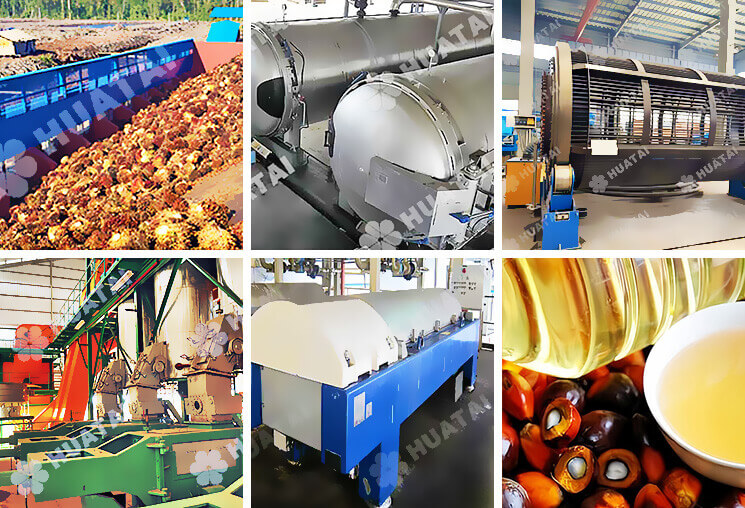China leading palm oil mill plant machine manufacturer and supplier
Email:info01@cnoilmachine.com
Palm oil refining shares the same core principles as other edible oils (such as soybean oil and peanut oil), but the process details differ significantly. Essentially, the process is adjusted based on the unique physicochemical properties of palm oil to ensure refining effectiveness and product quality.
Regardless of the type of edible oil, the core of refining is to remove impurities from the raw oil, ultimately obtaining pure, stable oil that meets edible standards. This mainly includes four basic steps:
Degumming: Removing phospholipids from the oil to prevent foaming and smoking during heating.
Deacidification: Removing free fatty acids to lower the acid value of the oil, improving taste and stability.
Decolorization: Removing pigments using adsorbents (such as activated clay) to achieve a uniform and clear color.
Deodorization: Removing odor-causing substances under high temperature and vacuum conditions to enhance the purity of the oil's flavor.
More Complex Pre-treatment: Crude palm oil contains more saponins and gums, and easily carries palm fruit residue. Therefore, pre-filtration and desap removal are necessary to prevent equipment blockage or incomplete refining.
Other edible oils (such as soybean oil) have phospholipids as their main impurities, requiring only simple filtration and degumming for pre-treatment.
Higher Temperature Control Requirements: Palm oil has a high melting point (24-33℃) and easily solidifies at room temperature. The refining process must maintain an oil temperature of 45-55℃; otherwise, solidification will cause process stagnation, necessitating constant temperature heating equipment.
Soybean oil and peanut oil have low melting points (liquid at room temperature), allowing for more flexible refining temperature control (30-40℃ is sufficient), eliminating the need for additional temperature control measures.
The Special Characteristics of Fractionation Processes
Palm oil often requires a fractionation step after refining (through crystallization and filtration) to separate it into "palm palm resin" (used in cooking oil) with a low melting point and "palm stearin" (used in the food industry) with a high melting point, thereby increasing the product's added value.
Other edible oils (such as olive oil and rapeseed oil) rarely require fractionation and are marketed directly as single products after refining.

Palm oil contains a high amount of saturated fatty acids but also a small amount of unsaturated fatty acids. After refining, antioxidants (such as TBHQ) need to be added specifically to extend shelf life.
Soybean oil and flaxseed oil have high unsaturated fatty acid content. Antioxidant treatment focuses on preventing oxidative rancidity, and the types and dosages of antioxidants added differ from those used for palm oil.
Both have the same refining logic (impurity removal, purification, and stabilization). However, palm oil, due to its high melting point and unique impurity composition, requires specific adjustments in pretreatment complexity, temperature control, and fractionation processes. Other edible oils, on the other hand, focus more on adapting to their own impurity types and fatty acid composition.
If you are interested in our palm oil machine and palm oil mill plant. You can contact us through online consultation, filling out the form below, email, phone, etc. Our engineers will customize the most suitable plan and best price for you.